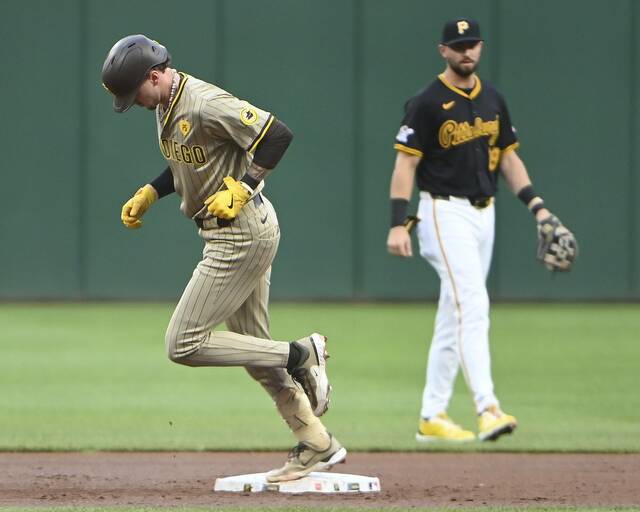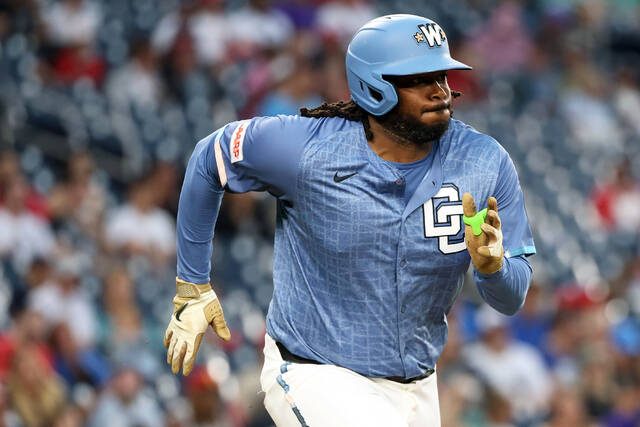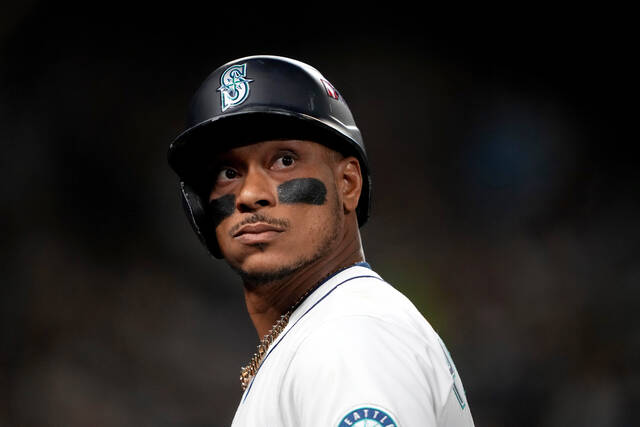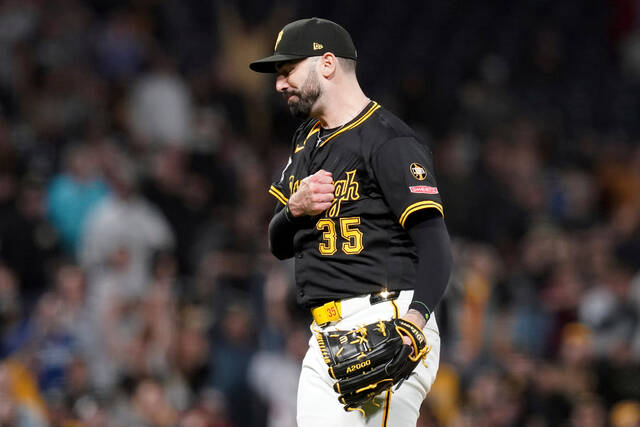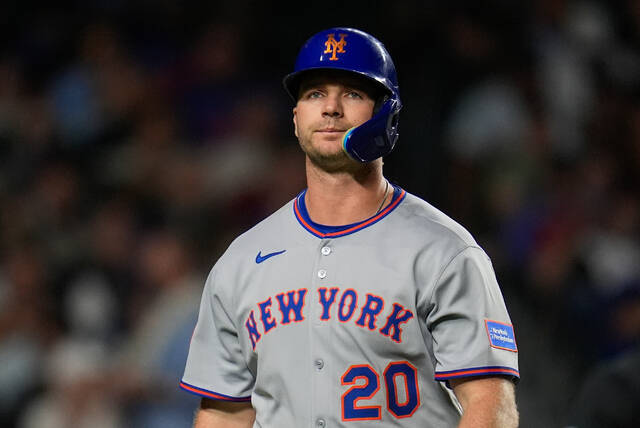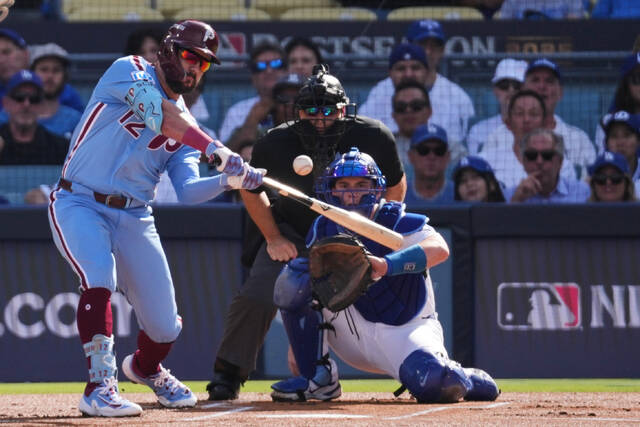Two years ago, it looked as if Major League Baseball was having an existential crisis. To many inside the game, it certainly felt like one as a sport built on its timelessness careened toward a future hellbent on speeding things up.
Pitch clocks. Defensive shift bans. Bigger bases. Fewer throwovers. Ghost runners. Expanded playoffs designed to keep more teams in contention. All with the expressed purpose of getting the fans in the stands to put down their phones and the ones sitting at home from flipping to a channel where something was actually happening.
Though the changes are working, there was trepidation. And with good reason.
Los Angeles Dodgers manager Dave Roberts could feel baseball retreating into the mainstream background, and the metrics — from attendance to TV ratings on down — backed it up.
“I think that in the last 10 or 20 years, you know, football and basketball have taken market share,” he said.
The issue wasn’t the players, who are throwing it harder, hitting it farther and running faster than any generation that came before it. It was the game itself.
Nearly two seasons into MLB’s great experiment, the bleeding has stopped. The average game time has dropped to 2 hours, 36 minutes, the lowest since 1984. Attendance is up 11% since 2022. Viewership — particularly among fans 18-34 — has risen 10.5% since the changes were adopted.
The angst that accompanied MLB’s modernization has been replaced by: legitimate buzz.
The best player on Roberts’ team and arguably the best player on the planet, Shohei Ohtani, offered proof in Miami last week.
Six swings. Three home runs. Two stolen bases. A club-record 10 RBIs. The inaugural member of the 50/50 club. It was an iconic performance by Ohtani that broke barriers and social media along with it.
“I don’t love all the rule changes, but they seem to be making the game more exciting for fans, which is why we play: for our fans,” Cleveland Guardians manager Stephen Vogt said.
A fan base that is growing younger seemingly in lockstep with the game’s bid to get faster. According to MLB, the median age of ticket buyers has dropped five years (from 51 to 46) since 2019. The number of tickets sold to fans ages 18-34 has jumped 8.5% over that span. It helps that the games are getting shorter. Attendance at weeknight games is up 12% over 2022 per MLB, in part because fans aren’t as concerned they’re going to be out all night.
“To sit down and watch a game used to be just too much of a time commitment, right?” said Tate Conrad of Des Moines, Iowa, while taking in a game at between the Chicago Cubs and New York Yankees in early September.
Now, not so much. And it’s not just that the games are shorter. There’s more happening, most notably on the base paths.
The decision to limit pickoffs has allowed baserunners to go wild. There have been nearly 1,000 more stolen bases in 2024 than there were in 2022 heading into the final days of the regular season.
“I just feel like the attention span of people is getting shorter and shorter,” Arizona Diamondbacks outfielder Jake McCarthy said. “So I just think when you turn on a baseball game, the odds of a play like that happening — (the changes have) increased the chances of it.”
Then there is the wave of young stars, including Pittsburgh Pirates rookie ace Paul Skenes, San Diego Padres outfielder Jackson Merrill, Kansas City shortstop Bobby Witt Jr. and Cincinnati shortstop Elly De La Cruz.
That group could eventually be where Ohtani and teammate Mookie Betts, New York Yankees slugger Aaron Judge, and Philadelphia Phillies first baseman Bryce Harper are now: the faces of the game.
Yet there’s more at play here.
It’s not just baseball that’s changing but the way the game is being consumed. It’s not just that more fans are watching games on their phones than ever — MLB.TV’s 28 highest-rated telecasts have all come over the course of the last two seasons — but that they’re looking toward nontraditional outlets.
Outlets such as Jomboy Media. Co-founded seven years ago by Jimmy O’Brien when he was in his late 20s along with Jake Storiale, Jomboy Media offers sports-related content across various platforms, including a YouTube channel that has nearly 2 million subscribers.
“My brother is 10 years younger than I am, and baseball abandoned him,” O’Brien said. “They didn’t put highlights where people could find them.”
Skenes sees the increasingly symbiotic relationship between players and content creators as a driver of interest in the game.
“They are growing the game, and I think that’s a byproduct of what we’re doing on the field,” he said.
The aim isn’t just to create fans, but players.
There’s evidence that it’s working. Over 16 million children participated casually in baseball in 2023, according to the Sports & Fitness Industry Association, more than double what it was in 2014, the last year before MLB launched it’s “Play Ball” Initiative. Little League International counts more than 2 million kids playing youth baseball or softball under its umbrella across the world, a slight increase over 2019.
It helps MLB has loosened up its staid rules on uniforms and celebrations, allowing players to express themselves in ways that used to be forbidden.
Bat-flips, hand-gestures and highly specific home run celebrations are now an accepted part of the game, along with more freedom for players to use whatever colors they prefer on their cleats or their gloves.
Swag is important, said Pirates manager Derek Shelton: “I think it’s been a very concerted effort by Major League Baseball to try to make it a little bit more, I don’t know if ‘cooler’ is the right word but appealing to younger kids because that’s what they gravitate towards.”


